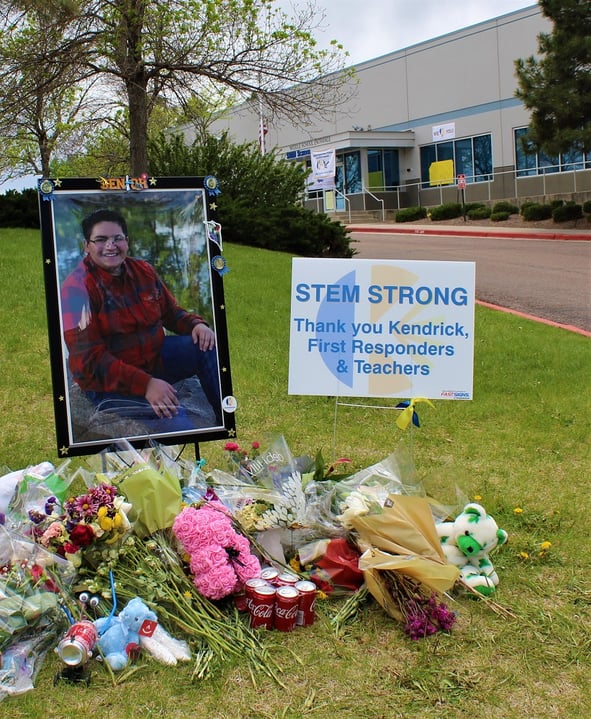AURORA, Colo. (CN) — Nome Park spans just two blocks of a Denver suburb, connecting Aurora Central High School with Mount Nebo Cemetery.
While small, this park has become synonymous with youth violence for many Aurora residents. A steady drip of violence turned into a torrent two years ago, when six teenagers were shot and wounded here in a drive-by attack.
It wasn’t Aurora’s first mass shooting, or even the most deadly — the Aurora Theater massacre in 2012 holds both those titles. (Like many mass casualty incidents, that attack was carried out by a young white male.) Still, students being shot at a public park right outside their high school was enough to shock the community and prompt a flurry of action from adults in power.
The Aurora Police Department investigated the crime, filed charges against a 16-year-old Hispanic boy and launched a novel program aimed at group-driven violence. City council likewise created a new office for youth violence prevention. Since then, it’s distributed $800,000 in community grants for programs aimed at reducing youth gun violence. These efforts represent a new push in Aurora and across the nation, as officials take aim at the root causes of violence, like poverty and despair, in an effort to curb youth gun deaths.
Talk to students heading home on a recent chilly Friday, and the Nome Park shooting in 2021 might as well have happened long ago or somewhere far away. At the south end of the park, two young Black women swapped stories in soft and well-worn hoodies. Snow clung to the yellowing grass.
“At this point it happens so often that, like, it just is what it is,” said Asher, 17. (Courthouse is redacting Asher’s last name, as well as those of other students in this story.)
“There's so many stories of teenagers dying, either from police officers or other teens or grown adults trying to kill these kids,” she added. “Suicide is a big part of gun violence as well.”
On a dime, Asher had it all figured out. Unstable environments, stress and institutional racism drive gun violence, she said. But she stopped herself there, thinking there’s little that can change it.
“Home life, school life, everything is stressing them out until they can’t handle it no more,” Asher said. If someone wants to get a gun, she figures they’re going to get one.
Asher is not all wrong about the root causes of gun violence. Academic research points to broad societal trends that make teens more likely to take up arms, from exposure to gun violence to living in poverty.
Young people of color are disproportionately at risk of gun violence. Black men ages 15 to 34 are 12 times more likely to die of gun homicide than white males of the same age, while young Native American men are more likely to die of suicide.
“Nobody’s happy at this point,” Asher’s friend Ariel, 18, concurs. She looks for light in the darkness. She says having friends helps.
“It's better to have, like, at least one person you can open up to,” Ariel said. “If you keep all that bottled up, it just gets worse and worse.”
Adolescence can be a difficult age — but many teenagers grapple with deep feelings without killing or maiming each other. In the United States, the rise in teen gun deaths has coincided, logically enough, with increased access to guns.
Since 2002, the number of teenagers nationwide who carry a firearm increased 41% — with researchers now estimating that nearly 1 in 20 American teens regularly carries a gun. Over the course of just one year, authorities confiscated 44 guns from five Denver-area school districts, a local news investigation found this year following a March shooting at Denver East High School. In that shooting, a 17-year-old Black student wounded two school administrators before fleeing to a rural county, where he took his own life.












